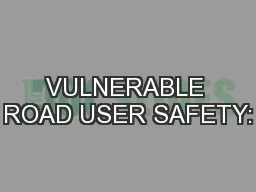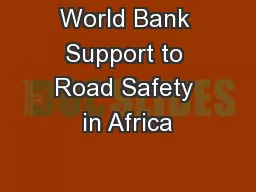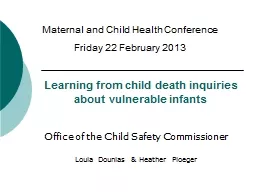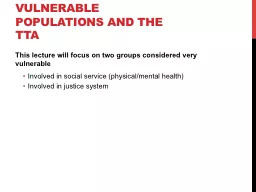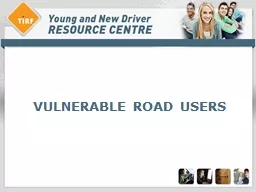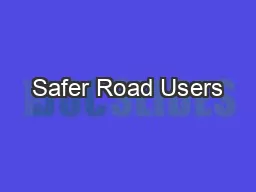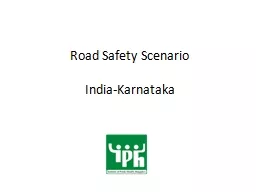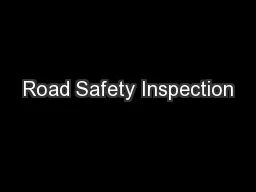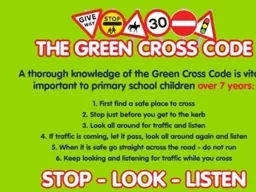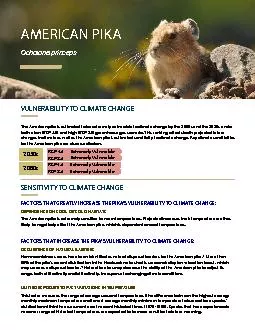PPT-VULNERABLE ROAD USER SAFETY:
Author : liane-varnes | Published Date : 2019-11-27
VULNERABLE ROAD USER SAFETY Making Travel Safer Using Pedestrian Safety Technologies March 6 2019 Project Team Mafruhatul Jannat PhD Stephanie Roldan PhD Stacy Balk
Presentation Embed Code
Download Presentation
Download Presentation The PPT/PDF document "VULNERABLE ROAD USER SAFETY:" is the property of its rightful owner. Permission is granted to download and print the materials on this website for personal, non-commercial use only, and to display it on your personal computer provided you do not modify the materials and that you retain all copyright notices contained in the materials. By downloading content from our website, you accept the terms of this agreement.
VULNERABLE ROAD USER SAFETY:: Transcript
Download Rules Of Document
"VULNERABLE ROAD USER SAFETY:"The content belongs to its owner. You may download and print it for personal use, without modification, and keep all copyright notices. By downloading, you agree to these terms.
Related Documents

